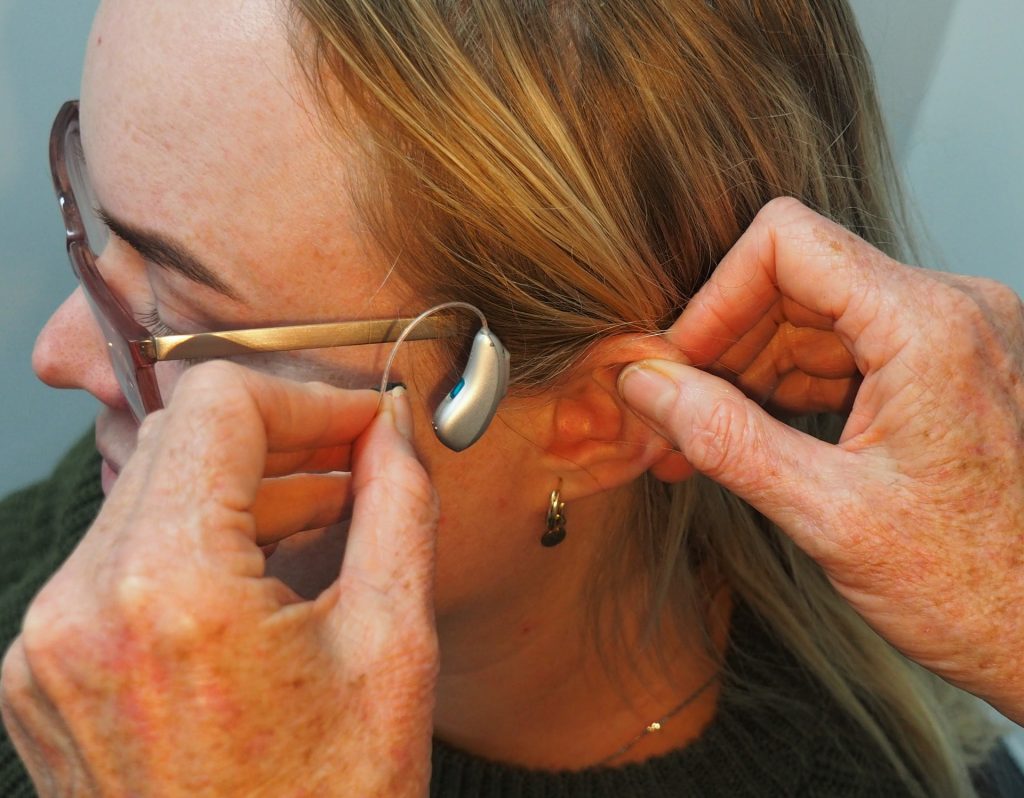
Hearing loss is the 4th cause of global disability. Over 466 million adults and 14 million children suffer from hearing loss according to the World Health Organisation (WHO). It is assumed that half the cases in children could be prevented through early detection like hearing screening programmes in school and therapeutic management. These can help minimise the impact of hearing loss on a child’s development and personal growth later in life. As technology advances, more and more innovative solutions are being developed to help diagnose and assist individuals with hearing disabilities.
Welcoming the Age of Hearables
Hearables are essentially ‘smart earbuds’. They are technology pieces or a group of technology that work together to enhance an individual’s hearing ability. These wearable communication devices have the potential to be used by individuals who suffer from hearing loss – signifying a new age for treating hearing-related health troubles.
What are some of the new and innovative technologies for people with hearing disabilities?
Introducing diagnostic smart apps
If you think that you may have issues with hearing, it’s best to check with your doctor. Alternatively, you may download smart apps like Mimi Hearing Test (iOS) or Hearing Test (Android) to help you gauge if you need further medical examination.
Better audio technology
The new Bluetooth 5.2 “LE Audio” technology is set to radically transform the way we experience life with improved sound quality, better connectivity and longer battery life. Most new phones and TVs are set to feature LE Audio technology. This will enable Bluetooth 5.2 hearing aids to quickly connect and stream sounds from different audio sources as they move through the world.
App-controlled hearing aids
Now you can make adjustments to your hearing aids discreetly in just a few taps. App functions may differ based on the manufacturer, but generally, you will be able to change the level of sound, adjust the equaliser or noise reduction, connect to accessories, request for assistance, store preferred settings for different locations, and locate misplaced hearing aids easily. This offers the user more customisation, as they can now personalise the hearing levels easily and quickly.
Improved user safety via built-in 3D sensors
In 2019, Livio AI was introduced as the world’s first hearing aid with artificial intelligence and integrated sensors. It was built for the ageing population and can help detect when a wearer falls. It will then send alert messages to selected friends and family members. Its users can benefit from good audio while their family members can enjoy a peace of mind.
Artificial Intelligence (AI) and active language translation
AI-powered hearing aids are said to do more than just mimic human hearing. It is said that it will take hearing to a whole new level. Imagine greater customisation with faster response times and clearer sound processing, or even real-time in-ear language translation. It will also filter out unnecessary noise from your surroundings and learn your hearing preferences over time to personalise the way your hearing aids work.
New stylish designs to go with your style
To keep up with current fashion trends and modern technology, hearing aid manufacturers have started making sleeker, unobtrusive hearing aid designs. These offers its users a more discreet look that goes with their personal styles. Individuals can now opt for compact and slim designs with custom fitted speakers for better sound quality and more.
An exciting start to the future
Hearing aids have come a long way. What was once built with basic functions to assist individuals who are hard of hearing, now come with comfortable and stylish designs along with improved functions and features. Technological advancements have assisted in helping the deaf community interact with the hearing world better. As our world continues to evolve, we are excited to see what else the future has in store for the deaf community.
References
Hearnet. (2021) Hearables. [Accessed: 17 November 2021] Available at: https://hearnet.org.au/hearing-technology/hearables
Jeremy, H. (2021) The Future of Bluetooth Hearing Aids: How LE Audio Will Revolutionize the Way You Hear the World. [Accessed: 17 November 2021] Availabel at: https://www.discovermagazine.com/health/the-future-of-bluetooth-hearing-aids-how-le-audio-will-revolutionize-the-way
Miracle Ear. (2021) Find Stylish Hearing Aids for Your Look. [Accessed: 17 November 2021] Available at: https://www.miracle-ear.com/blog-news/stylish-hearing-aids
Schmucker, C., Kapp, P., Motschall, E. et al. (2019) Prevalence of hearing loss and use of hearing aids among children and adolescents in Germany: a systematic review. [Accessed: 17 November 2021] Available at: https://bmcpublichealth.biomedcentral.com/articles/10.1186/s12889-019-7602-7
Starkey Hearing. (2019) The first and only hearing aid with fall detection and alerts. [Accessed: 17 November 2021] Available at: https://www.starkey.com/blog/articles/2019/03/Fall-detection-technology-in-a-hearing-aid
The Medical Futurist. (2019) The Future Of Hearing: How Technology Might Turn Us Into Superheroes. [Accessed: 17 November 2021] Available at: https://medicalfuturist.com/future-of-hearing/
World Health Organisation. (2021) Deafness and hearing loss. [Accessed: 17 November 2021] Available at: https://www.who.int/news-room/fact-sheets/detail/deafness-and-hearing-loss